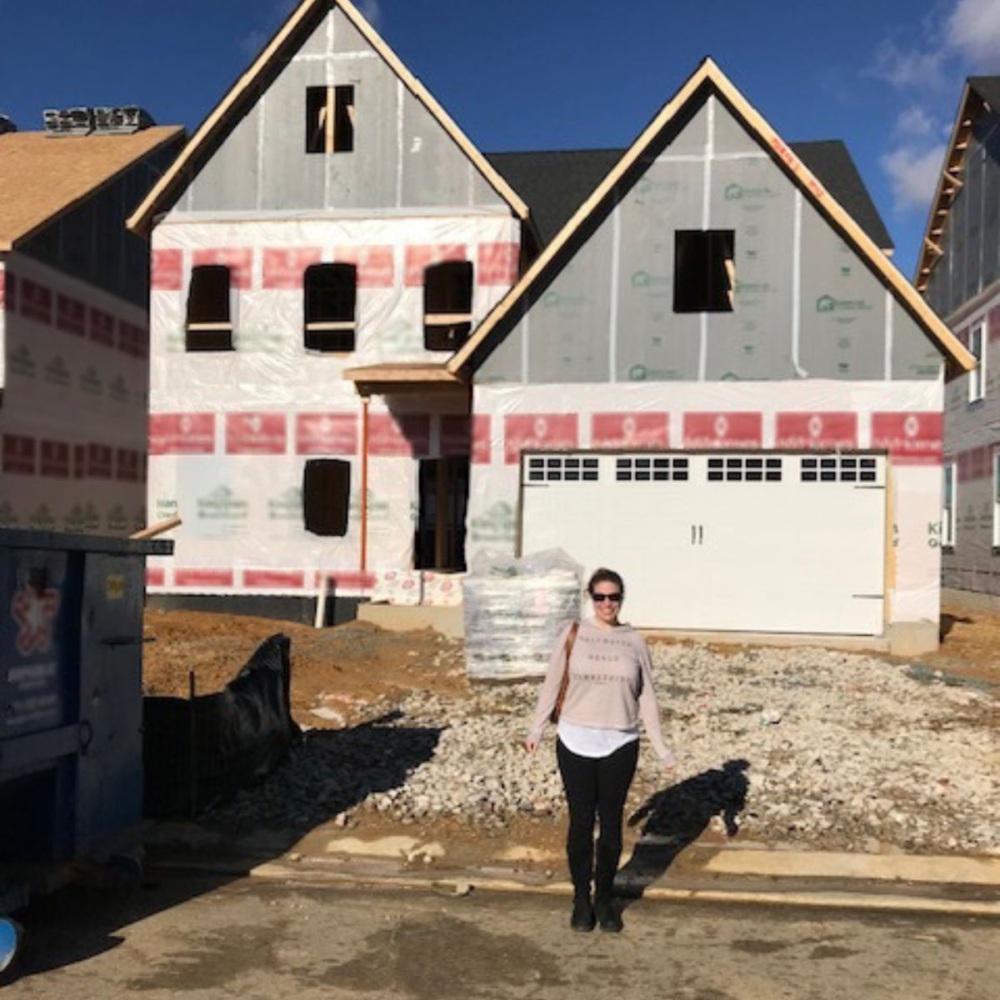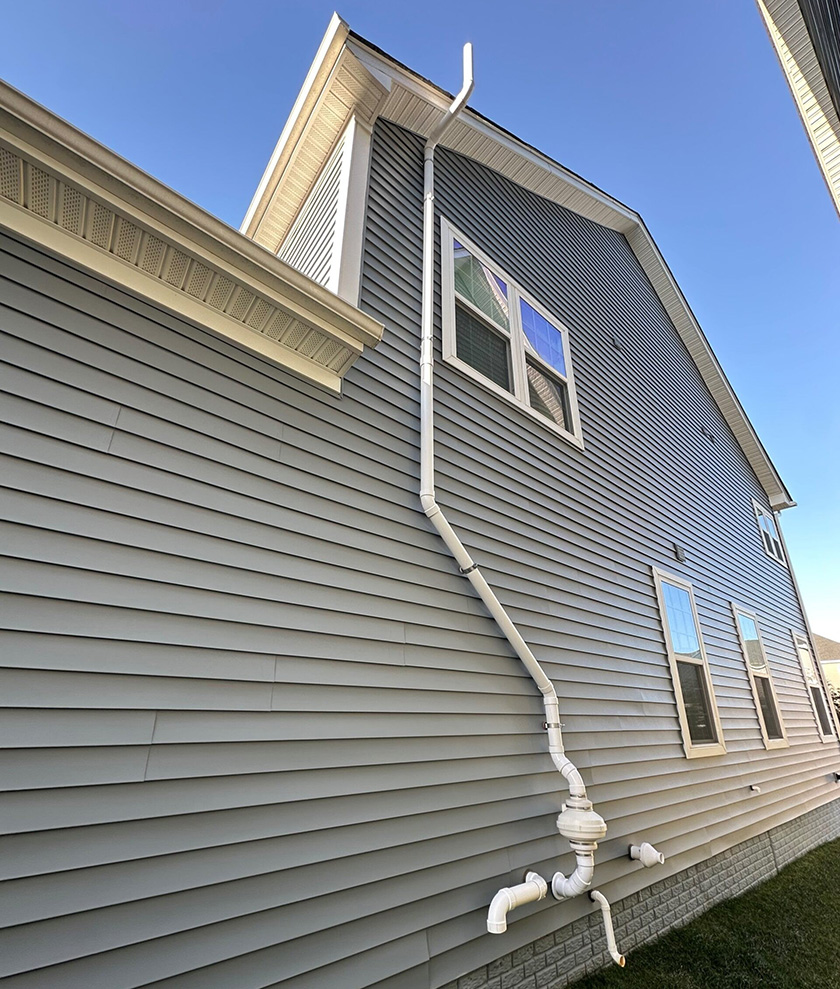My house had high levels of radon — here’s how I fixed it

رادون یک گاز نامرئی است که از خاک آزاد می شود و می تواند در خانه شما جمع شود. همچنین دومین علت اصلی است سرطان ریه بعد از سیگار کشیدن
به عنوان بخشی از کارم در بنیاد پیشگیری از سرطان، همیشه با پیامرسانی کار میکنم راه های کاهش خطر سرطان- آنقدر که گاهی فراموش می کنم این توصیه ها در مورد من نیز صدق می کند.
اما صبح روز سهشنبه سال ۲۰۲۲، هنگامی که به خواندن سخنان همکارم در مورد اهمیت آزمایش رادون نشستم، متوجه شدم: من آنچه را که موعظه میکردم، انجام نمیدادم.
به طور مبهم به یاد داشتم که سازنده خانه جدیدمان در مورد آزمایش رادون صحبت می کرد. اما بین مستقر شدن در خانه جدیدمان، به دنیا آمدن اولین فرزندمان، و گذر از یک بیماری همه گیر، نادیده گرفتن این موضوع آسان بود. این باید تغییر می کرد.
صبر کنید - پس چه کسی باید خانه خود را برای رادون آزمایش کند؟ آیا فقط برای ساخت و ساز جدید است؟
پاسخ کوتاه این است که همه کسانی که قبلاً این کار را انجام نداده اند باید خانه خود را برای رادون آزمایش کنند. گاز رادون از پوسیدگی طبیعی اورانیوم که در همه خاکها یافت میشود، به دست میآید که از زمین به سمت بالا حرکت میکند و از طریق شکافها یا سوراخهایی در پی وارد خانه میشود. خانههای جدید ممکن است حساس باشند، زیرا زمین در طول فرآیند ساخت و ساز مختل میشود، که میتواند رادون بیشتری آزاد کند.
اگرچه خانههای جدید را میتوان با ویژگیهای مقاوم در برابر رادون ساخت تا از ورود رادون جلوگیری شود، این خانهها همچنان باید پس از نقل مکان مورد آزمایش قرار گیرند. هر خانهای میتواند دارای سطوح بالایی از رادون باشد، خانههای جدید یا قدیمی، خانههایی که به خوبی مهر و موم شده یا خانههایی که دارای پیشروی هستند، و خانهها. با یا بدون زیرزمین

چگونه خانه خود را برای رادون آزمایش می کنید؟
آزمایش رادون یک فرآیند ساده است و بسته به بودجه شما گزینه های زیادی وجود دارد.
ما با یک شرکت محلی کاهش رادون که توسط یکی از همسایگان توصیه شده بود تماس گرفتیم (آنها همچنین کارهایی مانند ضد آب کردن زیرزمین و تعمیر فونداسیون را انجام می دهند). آنها آزمایشات رادون را در خانه ما تنظیم کردند که به طور دوره ای سطوح رادون را در طول 48 ساعت ثبت می کرد. سپس گزارشی از هر مطالعه، میانگین سطوح و توصیه های خود را در اختیار ما قرار دادند. (این یک آزمون کوتاه مدت بود. تست های بلند مدت برای خواندن دقیق تر توصیه می شود، اما اگر به پاسخ سریع نیاز دارید، ممکن است یک آزمون کوتاه مدت راه حلی باشد.)
اگر استفاده از یک شرکت حرفه ای در بودجه شما نیست، می توانید یک کیت تست (که به صورت آنلاین یا در برخی از فروشگاه های سخت افزار موجود است) خریداری کنید و خودتان آزمایش رادون را انجام دهید.
آنها در آزمایش رادون به دنبال چه هستند؟
آژانس حفاظت از محیط زیست (EPA) اگر سطح رادون شما 4 پیکوکی در لیتر (pCi/L) یا بیشتر است، خانه خود را تعمیر کنید. (میزان رادون پایین تر از این ممکن است همچنان خطرساز باشد.)
در مورد ما، سطح رادون ما بسیار بالا بود - سطح متوسط ما در زیرزمین 4.4 pCi/L بود. تاثیر آن بر سلامت خانواده ما معادل کشیدن سیگار در حدود هشت نخ در روز بود! زیرزمین ما هم به عنوان دفتر خانه و هم به عنوان اتاق بازی عمل می کند، بنابراین درک اینکه فضایی که کودک من در آن بازی می کند و شوهرم بیشتر وقت خود را در آن می گذراند، برای سلامتی آنها به خطر می اندازد، وحشتناک بود.
سطح بالایی از رادون در خانه من وجود دارد. این برای خطر سرطان خانواده من چه معنایی دارد؟ حالا من چیکار کنم؟
تخمین زده می شود که رادون باعث حدود 21000 مرگ و میر ناشی از سرطان ریه در سال می شود. اما اگر آزمایش سطوح بالای رادون را در خانه شما تشخیص داد، نترسید. اکنون می توانید کاری در مورد آن انجام دهید، خطر ابتلا به سلامت خانواده خود را کاهش دهید و سرطان را قبل از شروع آن متوقف کنید.
برای رفع آن، باید یک سیستم کاهش فعال رادون را نصب کنید، که معمولاً توسط شرکتی که آزمایش شما را انجام داده میتواند انجام دهد.
دو گزینه برای سیستمهای کاهشدهنده ارائه شد، تفاوتهای اصلی هزینه و ظاهر بود (هزینههای گرانتر به مراتب کمتر مزاحم بود، اما از بودجه ما خارج بود).
در پایان، ما حدود $1500 برای کاهش سطح رادون در خانه خود پرداخت کردیم. و اگرچه سیستم کاهش خطر در کنار خانه ما قسمت مورد علاقه من از خانه ما نیست، اما ارزش این را دارد که بدانیم خانواده من امن هستند.
بعد چه اتفاقی می افتد؟
از آنجایی که ما در خانه خود سطوح بالایی از رادون داشتیم، شرکتی که با آن کار می کردیم توصیه می کند هر سه سال یک بار آزمایش مجدد انجام شود تا مطمئن شویم که سطح رادون ما افزایش نیافته است. برای این بررسی ها، ما در نظر داریم از کیت های تست در خانه استفاده کنیم. به یاد داشته باشید، ما قرارهای تقویم را طوری تنظیم می کنیم که هر سه سال یک بار تکرار شوند - این بار، اجازه نمی دهیم مشغله های زندگی مانع شود.
اکنون وقتی پیامهای مربوط به رادون و خطر سرطان را ویرایش میکنم، میتوانم نفس راحتی بکشم. من صحبت می کنم، از خانواده ام مراقبت می کنم و از سرطان پیشگیری می کنم - و شما هم می توانید.
درباره دیگران بیشتر بدانید راه هایی برای کاهش خطر ابتلا به سرطان امروز.
¹منبع: آژانس حفاظت از محیط زیست ایالات متحده www.epa.gov